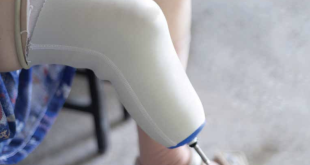Words by Spandana Paudel
Physiotherapy plays a crucial role in the prenatal, antenatal, and postnatal phases of pregnancy.
Physical therapy, also known as physiotherapy, is usually understood as a healthcare profession that deals with the treatment related to bones, nerves, and muscle injuries. Physiotherapy also plays a crucial role in the prenatal, antenatal, and postnatal phases of pregnancy.
Exercise during pregnancy reduces the chances of cesarean deliveries, gestational weight gain, and postpartum depression, showcasing its holistic benefits.
How is physiotherapy beneficial to women during these rather demanding times? What are its advantages? The answer is that physiotherapy provides a range of interventions that aim to prevent or alleviate the problems during pregnancy. Women go through various biomechanical and physiological changes during the prenatal, antenatal, and postnatal period. Therefore, there are special interventions for women particularly, which include pelvic floor health, pain management, preparation for labor, postpartum rehabilitation as well as forms of psychological support.
Pelvic floor health during pregnancy is vital; physiotherapeutic interventions, including Kegel exercises, address weaknesses and promote quick healing post-childbirth.
Exercise during pregnancy is not only beneficial for physical well-being, but also supports the psychological well-being of expecting mothers. Exercise has shown to reduce the chances of cesarean and operative vaginal deliveries, gestational weight gain, postpartum depression, as well as pregnancy-related complications like pre-eclampsia, gestational hypertension, gestational diabetes, fetal macrosomia and low birth weight. However, before prescribing an exercise, it is important to look for any prevailing contraindications that are preexisting. These include ruptured membranes, unexplained per vaginal (PV) bleeding, incompetent cervix, or any serious cardiovascular, respiratory, or systemic diseases.
Muscle strengthening exercises and proper ergonomics are essential in mitigating musculoskeletal issues caused by the expanding uterus during pregnancy.
I would like to draw attention to an important topic — pelvic floor health. The pelvic floor muscles in the body generally support the pelvic organs keeping it in place. It also maintains urinary and fecal continence, as well as sexual function. However, during pregnancy, these muscles can become weak. This can cause urinary or bowel incontinence as well as impair sexual function. If not addressed properly, it can also lead to pelvic organ prolapse.
Here, the physiotherapeutic approach is to first assess the pelvic floor muscles. Then, patients are taught pelvic floor muscle strengthening exercises (also known as Kegel’s exercise). It includes contracting and relaxing the pelvic floor muscles, helping them to become stronger. It also facilitates the quick healing of the perineal muscles as a great amount of pressure needs to be applied during childbirth. A physiotherapist will teach the patient how, where, and how many times this exercise needs to be performed.
Physiotherapy not only aids physical recovery post-childbirth but also supports emotional well-being, providing a friendly and judgement-free environment for mothers.
As pregnancy progresses, the expansion of the uterus due to the growing fetus leads to specific postural changes in the mother. This leads to musculoskeletal issues like upper back pain, lower back pain, and pelvic girdle pain. To mitigate this, muscle strengthening exercises are performed. Core strengthening exercise include opposite arm and leg raises, modified V-set on a bench or floor, seated site bends etc. Spinal stability exercises include Cat and Camel, Bird, Dog, etc., and muscle flexibility exercises include hamstring stretch, piriformis stretch, adductor muscles stretch, trapezius stretch, sternocleidomastoid stretch, etc. Additionally, teaching the expecting mother proper ergonomics also plays a crucial role in the prevention and management of musculoskeletal pain.
Furthermore, many pregnant women present with edema in their upper and lower limbs. For this, circulatory exercises are taught. Another common complaint during pregnancy is shortness of breath for which deep breathing with thoracic expansion exercises are taught.
Labour is both a mentally and physically demanding process. Physiotherapy can be used as a tool in easing the experience of childbirth. This is achieved through different breathing exercises in combination with muscle relaxation techniques which have been found to reduce the perception of pain during labor. Moreover, physiotherapists also help in deciphering different birthing positions according to the phase of labor the patient is going through. This can also be taught to patients.
The postnatal period is known as the period that occurs immediately after childbirth. It is often known to be a more neglected period in a mother’s life. For this, postnatal rehabilitation is performed, which comprises looking after the physical as well as emotional recovery of mothers. It begins with addressing the changes a woman goes through during pregnancy and childbirth. Those changes can lead to problems like back pain, perineal muscle weakness and pain, diastasis recti, deviated posture, and joint instability. Physiotherapists design personalised rehabilitation programs depending on the presenting symptoms of the patient. This includes strengthening of core, abdominal, back, and pelvic muscles along with mild circulatory and stretching exercises and eventually progressing to aerobic exercises. However, if patients complain of heaviness in the pelvic area, bladder or bowel incontinence, and increased blood loss which is not associated with the monthly cycle, it is a sign to slow down or stop aerobic exercises under the guidance of a physiotherapist.
As previously mentioned, postnatal rehabilitation also works to support the emotional well-being of mothers. Mothers can experience a range of emotions due to the nature of fluctuating hormones. Physiotherapists ensure a friendly and supportive environment where mothers can talk freely without judgement. In addition to this, physiotherapists also educate patients on the common changes that occur in their body with the assurance that they will soon be able to return to their normal lifestyle. Hence, it would be fair to add that physiotherapists strive to empower women and their abilities, making them confident throughout their journey of motherhood.
In conclusion, physiotherapy plays a fundamental role during pregnancy and the postpartum period. Be it addressing musculoskeletal issues or working for pelvic floor health, encouraging exercise participation or preparing for childbirth, aiding postnatal recovery or emotional well-being, physiotherapy works holistically in promoting and creating a healthy life for both the mother and child. All health institutions and policy-making bodies must encourage pregnant women to seek advice from physiotherapists. Also, educating women’s health workers regarding the importance of physiotherapy during and after pregnancy is critical. Rather than dealing with problems later, it is wiser to strengthen the foundation so mothers are left feeling confident and supported by their bodies.
Spandana Paudel
Clinical Physiotherapist
UDM-NINAS
About the Author
Spandana Paudel is a Clinical Physiotherapist, currently working at Upendra Devkota Memorial National Institute of Neurological and Allied Sciences (UDMNINAS), Bansbari. She has completed her Bachelors in Physiotherapy from Kathmandu University School of Medical Sciences (KUSMS), Dhulikhel.
 Medicosnext
Medicosnext




